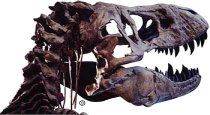
March Editorial
Permian Extinction

March Editorial
Permian Extinction
|
|
The cause of the end-Permian mass extinction of some 251 million years ago is still a hotly debated topic. A number of theories have been proposed, including a gradual fall in sea levels, climate change, oceanic anoxia, and volcanism. In 2001 a group of geologists headed by Kunio Kaiho from Tohoku University found evidence that an asteroid or comet smacked our planet, exploded, and caused the most severe crisis in the history of life on Earth. This observation was based on the them's findings of increased levels of sulphur and strontium isotopes at the end of the Permian age, along with a significant decrease in manganese, phosphorous, calcium, and microfossils (foraminifer). They also found a concentration of impact-metamorphosed grains and kaolinite. These findings suggested that an asteroid or a comet hit the ocean at the end of the Permian, triggered a rapid and massive release of sulphur from the earth's mantle into the oceans and atmosphere, soaked up a significant amount of oxygen, precipitated acid rain, and possibly set off large-scale volcanism around the planet. However, a more recent study has now been published in the December issue of Geology, and this provides strong evidence that the cause of the Permian extinction did not come from the heavens but from Earth itself. An international team of scientists led by Christian Koeberl from the University of Vienna analysed rocks in the Carnic Alps of southern Austria and the western Dolomites in northeast Italy for evidence of extraterrestrial impact. Asteroids and comets are chemically different from terrestial material and when these objects hit the planet they leave a tell-tale chemical fingerprint in the rocks. Iridium, for example, is abundant in asteroids, comets, and other extraterrestrial material but so are [3]Helium and [187]osmium. Although scientists have found small amounts of Iridium the other two isotopes were not found. Christian Koeberl argues that the small amount of Iridium found in their samples may have been deposited by sluggish oceans when atmospheric carbon dioxide levels were high and seawater oxygen levels were low. The source of the carbon dioxide was probably volcanic activity. It is already known that at the end of the Permian there was a failed ocean formation which led to massive volcanic activity in the heart of present day Siberia. Emissions from the volcanic eruptions probably flooded the atmosphere leading to changes in climate and patterns of oceanic circulation. He suggests that widespread volcanic activity may have been, quite literally, the 'smoking gun,' that wiped out many of the life forms which then existed on Earth. |
| _______________________________ | ||||
| Home | | | Shopping | | | Database |
© Biscuit Software 2004-2015
All rights reserved